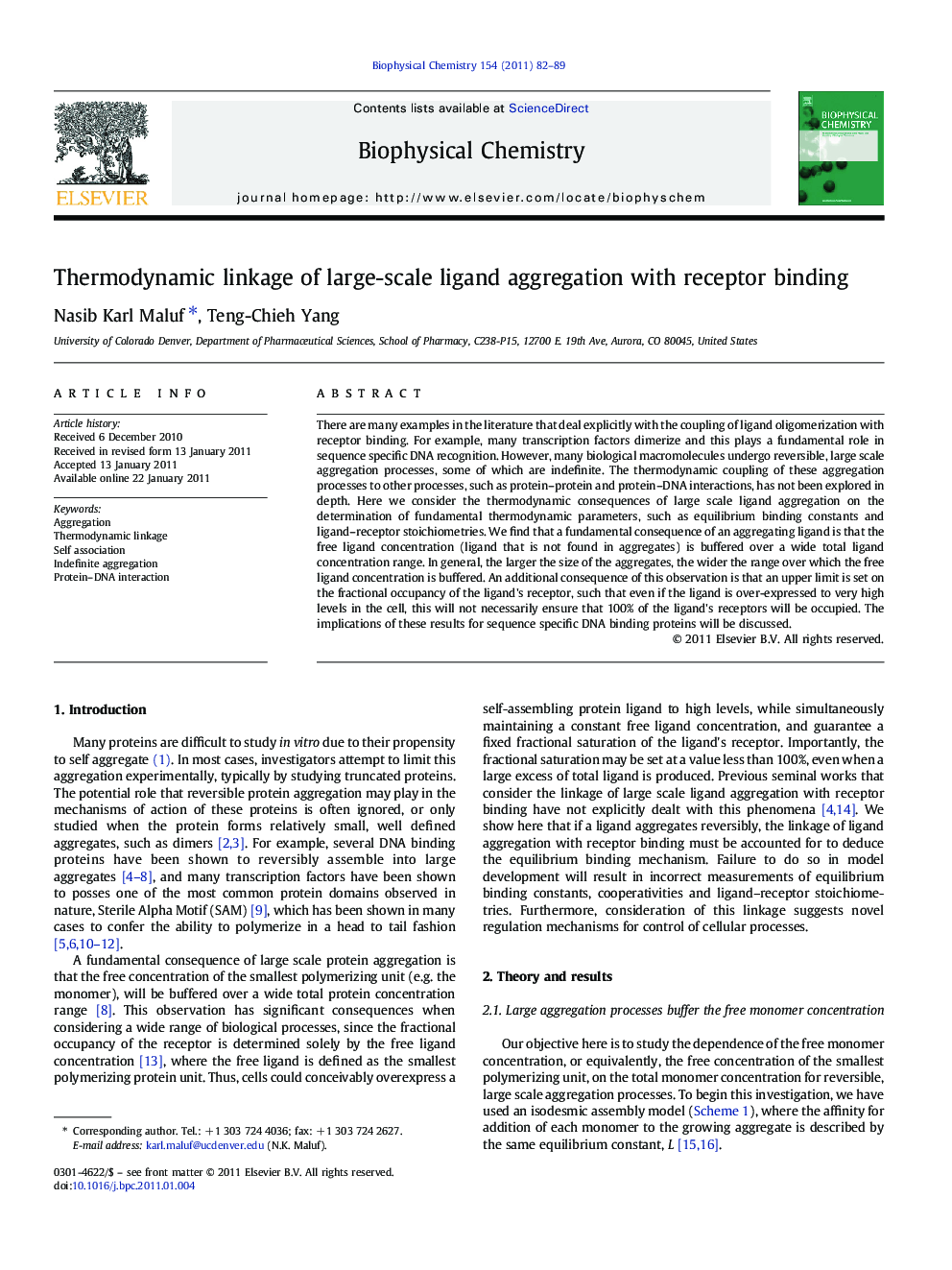| Article ID | Journal | Published Year | Pages | File Type |
|---|---|---|---|---|
| 5371557 | Biophysical Chemistry | 2011 | 8 Pages |
There are many examples in the literature that deal explicitly with the coupling of ligand oligomerization with receptor binding. For example, many transcription factors dimerize and this plays a fundamental role in sequence specific DNA recognition. However, many biological macromolecules undergo reversible, large scale aggregation processes, some of which are indefinite. The thermodynamic coupling of these aggregation processes to other processes, such as protein-protein and protein-DNA interactions, has not been explored in depth. Here we consider the thermodynamic consequences of large scale ligand aggregation on the determination of fundamental thermodynamic parameters, such as equilibrium binding constants and ligand-receptor stoichiometries. We find that a fundamental consequence of an aggregating ligand is that the free ligand concentration (ligand that is not found in aggregates) is buffered over a wide total ligand concentration range. In general, the larger the size of the aggregates, the wider the range over which the free ligand concentration is buffered. An additional consequence of this observation is that an upper limit is set on the fractional occupancy of the ligand's receptor, such that even if the ligand is over-expressed to very high levels in the cell, this will not necessarily ensure that 100% of the ligand's receptors will be occupied. The implications of these results for sequence specific DNA binding proteins will be discussed.
Graphical abstractDownload full-size imageResearch Highlights⺠Large-scale ligand aggregation buffers the free ligand concentration. ⺠Free ligand buffering places upper limits on fractional receptor occupancy. ⺠Broad cellular consequences of free ligand buffering.
